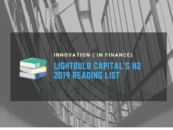
ASEAN Small And Medium Enterprises To Invest More In Technology To Boost Business Performance
by Company Announcement February 21, 2018Small and medium enterprises (SMEs) in Singapore and the ASEAN region see the need to invest more in technology in order to succeed under increasingly challenging conditions.
These are the findings of the ASEAN SME Transformation Study by United Overseas Bank (UOB), EY and Dun & Bradstreet.
The study found that three in five (60 percent) of ASEAN’s SMEs will focus their investments on technology over other fixed assets in 2018 to help drive business performance. Singapore SMEs (63 percent) echo the same preference for technology over investments in assets such as factories and machinery.
Seventy-eight percent of ASEAN’s SMEs say they would invest specifically in software such as improving their websites and creating mobile apps. They believe such innovations would enable them to create better customer experience and to increase customer loyalty. Hardware and infrastructure investments rank second (65 percent) for the SMEs across the region.
While SMEs see the need to innovate, they are still reliant on current tools such as licensed software, customer relationship management and content and database management.
Mr. Liew Nam Soon, Managing Partner, EY Asean Markets, Ernst & Young Advisory Pte. Ltd. said,
Liew Nam Soon
“There is a significant opportunity for SMEs in the region to improve their digital agility. SMEs have typically been cautious in adopting cutting-edge applications. But that is changing as we see disruptive offerings such as robotics process automation, artificial intelligence and 3D printing beginning to rouse the curiosity of SMEs.
In time, we expect that SMEs will increasingly subscribe to web-hosted applications to free themselves from managing IT functions internally.
“Going forward and as these businesses continue to expand their digital exploits, these enterprises will likely need to look to hire talent with experience in digital – such as data specialists and analysts, user experience or interface designers and digital marketers – to help them transform effectively for the digital economy.”
More benefits to be reaped from SaaS
Despite the focus on technology, the study highlights that SMEs are not aware of how efficiently pay-per-use or Software-as-a-Service (SaaS) can address their business needs. SaaS refers to web-based software that can be used to manage business processes such as accounting, invoicing and payroll.
SaaS is a more cost-effective option for small businesses than traditional licensed software. It provides users the flexibility to pay only for what they use and to scale the solution based on their business’ needs.
As small businesses expand, they can add on new functionalities or increase the number of users for their existing solution without the need for further significant investments.
Mr. Lawrence Loh, Head of Group Business Banking, UOB, said that as small businesses explore technology solutions to enhance business operations, it is important that they consider the range of options to ensure they are able to use their resources more effectively.
Lawrence Loh
“The findings of the study indicate that many small businesses may not be optimising their technology spend. Their preference for traditional licensed software could be due to their familiarity with these options over newer solutions such as SaaS. However, SaaS is often more cost-effective and enables the business to keep pace with technology advances.
“At UOB, we believe that small businesses can benefit from the use of SaaS. As such, we introduced UOB BizSmart, a suite of cloud-based business applications which provides small businesses a simple and cost-effective way to manage business processes such as payroll, invoicing and inventory management more efficiently,”
Mr. Loh said.
In November 2017, UOB expanded the range of solutions available under UOB BizSmart through a tie-up with SAP to offer SAP Business One to its customers. This is the first time SAP Business One is being offered to small businesses through an Asian bank. Through the collaboration, small businesses can benefit from the use of an enterprise resource planning solution, typically used by larger companies, to automate and to manage their day-to-day administrative processes.
Optimistic growth expectations
The study found that the SMEs generally have an optimistic outlook despite global economic headwinds and challenges such as rising costs, flagging productivity and not harnessing new technologies. Fifty-two per cent of the ASEAN respondents anticipate revenue growth while 26 per cent project a double-digit expansion. This optimism is highest among SMEs in the agriculture, manufacturing and financial services sectors.
Ms. Audrey Chia, Chief Executive Officer, Dun & Bradstreet Singapore said,
Audrey Chia
“This optimism reflects the region’s positive environment – nations experiencing muted growth are approaching the tail end of their economic slowdown and restructuring while those approaching a ‘demographic sweet spot’ will benefit from multiple factors to fuel SME growth.
The growth outlook for Singapore and ASEAN has remained robust as the region continues to achieve greater economic, trade, financial and social integration.
“The improving outlook for ASEAN SMEs does not discount the intensifying need for change. Technology will be the catalyst for growth and transformation. Enterprises must continually progress through proactively implementing productivity improvements, upskilling talent and embracing technological enablers to enhance and differentiate their product and services.
With greater support from the ASEAN-6 governments in the form of grants and subsidies for digitisation and technological innovation, we believe that these will help SMEs attain sustainable growth in today’s digital economy.”
The ASEAN SME Transformation Study was conducted in late 2017 with 1,235 SMEs across the six largest ASEAN countries – Indonesia, Malaysia, the Philippines, Singapore, Thailand and Vietnam – to understand how ASEAN SMEs are positioning themselves to participate in the region’s growth and to adapt to the changes ahead.
Results from the study were shared today at a customer event organized by UOB, EY and Dun & Bradstreet with more than 100 SMEs in attendance. To access the report, please visit www.ey.com/aseansme2018.
Featured image via Pexels










